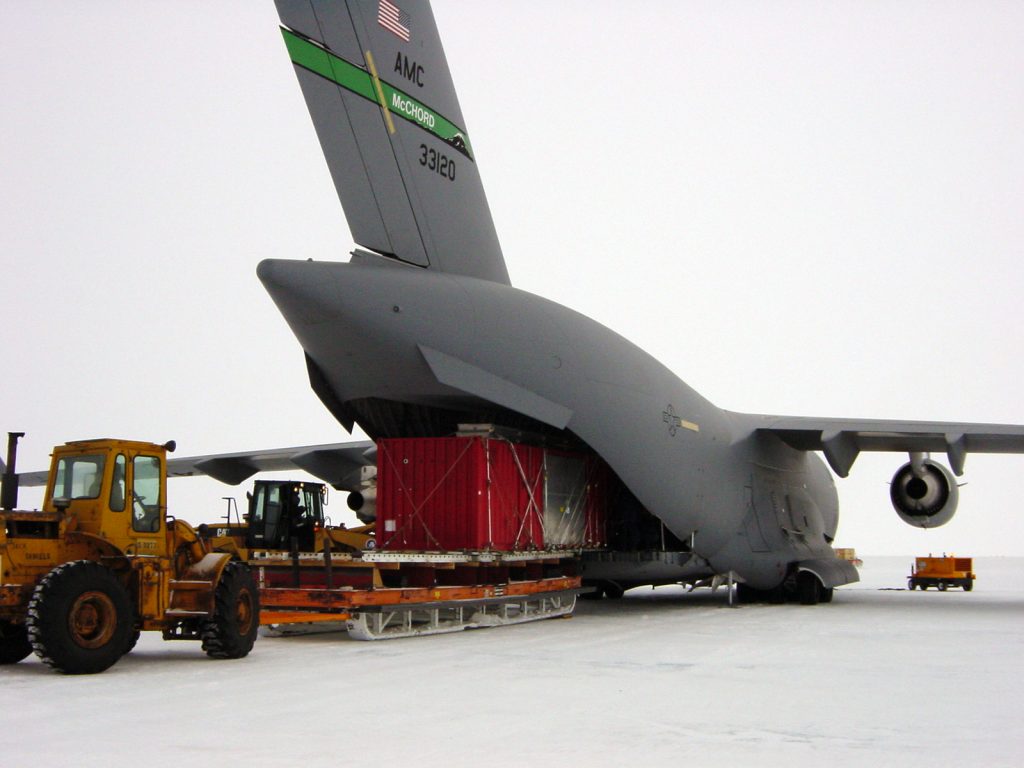- By TOP CHINA FREIGHT
- September 19, 2025
- Air Freight, Shipping
Table of Contents
Air freight is the fastest way to move goods across continents, but many importers ask: how much is air freight from China to US? The answer depends on weight, volume, routes, and seasonal demand. Since costs directly impact profit margins, understanding the pricing structure, transit time, and optimization strategies is essential. This guide explores costs, benefits, comparisons, and practical advice to help businesses make informed decisions.

What factors determine air freight costs from China to US?
Air freight pricing is never fixed. Several factors combine to create the final rate per kilogram or cubic meter.
Chargeable weight
Airlines calculate freight charges based on either actual weight or dimensional weight, whichever is greater.
Origin and destination airports
Major hubs like Shanghai Pudong (PVG) or Shenzhen (SZX) often have lower costs compared to secondary airports.
Seasonality
Peak seasons such as September–December, when retailers stock up for holidays, push prices higher.
Fuel surcharges
Global oil price fluctuations directly influence air freight surcharges.
Handling and customs fees
Costs at airports, including security screening, warehousing, and customs clearance, affect the total.
How much does air freight cost per kilogram?

Generally, air freight costs from China to the US range from $4 to $8 per kilogram for standard shipments. However, urgent express shipments or oversized cargo may exceed $10 per kilogram.
| Cargo Weight Bracket | Average Cost (USD/KG) | Typical Transit Time | Notes |
|---|---|---|---|
| 100–300 kg | $4.0 – $5.5 | 5–7 days | Cost-efficient for medium loads |
| 300–500 kg | $4.5 – $6.0 | 5–7 days | Balanced rate for growing importers |
| 500–1000 kg | $5.0 – $7.0 | 5–8 days | Suitable for regular shipments |
| 1000+ kg | $6.0 – $8.0+ | 5–9 days | Higher due to handling complexity |
What are the transit times for air freight from China to US?
Air freight is significantly faster than sea or rail freight. On average:
Direct flights:
3–5 days including customs clearance.
Indirect flights with transshipment:
5–9 days.
Express courier services (FedEx, UPS, DHL):
2–4 days.
| Route Example | Transit Time (Days) |
|---|---|
| Shanghai to Los Angeles | 3–5 days |
| Shenzhen to Chicago | 5–7 days |
| Guangzhou to New York | 5–8 days |
| Beijing to Dallas | 6–9 days |
Why choose air freight instead of sea freight?
While air freight costs are higher, it offers key benefits for specific business needs:
- Speed – Ideal for urgent shipments and product launches.
- Reliability – Airlines maintain strict schedules, reducing delays.
- Lower risk of damage – Less handling compared to sea freight containers.
- Inventory efficiency – Businesses can maintain leaner stock levels.
| Shipping Mode | Cost per KG | Transit Time | Pros | Cons |
|---|---|---|---|---|
| Air Freight | $4–$8 | 3–9 days | Fast, reliable, secure | High cost |
| Sea Freight | $0.5–$1 | 25–40 days | Economical, bulk capacity | Slow, port delays |
| Express Courier | $7–$12 | 2–4 days | Door-to-door, fastest | Most expensive |
How do peak seasons affect air freight rates?
During high-demand periods such as Q4 holiday season or Chinese New Year, airlines prioritize space, and rates can surge by 20–40%. Importers should therefore book cargo space 2–3 weeks in advance and consider flexible delivery schedules.
Additionally, sudden global disruptions—such as pandemics or supply chain strikes—can drastically push up prices. Importers should maintain buffer budgets and diversify suppliers to minimize risks.
What documents are required for air freight shipping?

To avoid customs delays, importers must prepare a complete set of documents:
| Required Document | Purpose |
|---|---|
| Commercial Invoice | Declares value of goods |
| Packing List | Details cargo contents |
| Air Waybill (AWB) | Contract between shipper & carrier |
| Export License (if applicable) | Required for restricted goods |
| Certificate of Origin | Confirms production country |
| Customs Declaration | Required by US Customs (CBP) |
Can businesses reduce air freight costs effectively?
Combine smaller shipments with other shippers to enjoy lower rates.
Shipping during off-peak seasons or weekdays may lower costs.
Reducing dimensional weight can significantly cut charges.
Long-term contracts with freight forwarders may offer better rates.
Shipping from hubs like Shanghai or Shenzhen instead of smaller airports reduces costs.
Case study: Electronics importer from Shenzhen to Los Angeles

A mid-sized electronics retailer needed to import 750 kg of gadgets from Shenzhen to Los Angeles urgently.
Option 1:
Standard air freight at $6/kg → Total $4,500, delivered in 6 days.
Option 2:
Express courier at $10/kg → Total $7,500, delivered in 3 days.
Decision:
Chose standard air freight, balancing cost and speed.
Outcome:
Goods arrived in time for product launch, saving $3,000 compared to express shipping.
This case highlights that carefully evaluating delivery deadlines against cost differences can maximize profitability.
Should small businesses use express couriers or standard air freight?
Small importers often prefer express couriers (DHL, FedEx, UPS) for simplicity. Rates are higher, but services include door-to-door delivery, customs clearance, and tracking.
However, once shipment volumes exceed 200–300 kg, switching to standard air freight through a forwarder becomes more cost-effective. Businesses should therefore assess shipment frequency, cargo size, and delivery urgency before deciding.
How does air freight compare with rail and sea freight in logistics planning?
Each shipping method serves different needs.
| Method | Cost | Transit Time | Best For |
|---|---|---|---|
| Air Freight | $4–$8/kg | 3–9 days | Urgent, high-value, low-volume goods |
| Sea Freight | $0.5–$1/kg | 25–40 days | Bulk, low-value, non-urgent cargo |
| Rail Freight (China–EU only) | $2–$3/kg | 15–20 days | Europe-focused cargo |
For US-bound cargo, air and sea remain the primary choices. Many companies adopt a hybrid strategy, shipping bulk items by sea while flying urgent stock via air.
What industries benefit most from air freight?
Electronics
Phones, laptops, and components with short product cycles.
Fashion and textiles
Seasonal collections requiring fast delivery.
Healthcare and pharmaceuticals
Medicines and medical devices with strict timelines.
E-commerce
Fast-moving consumer goods for online platforms.
These industries rely on speed-to-market, making air freight an essential logistics choice.
Conclusion
Air freight is a premium service, but for many businesses, its speed and reliability justify the cost. To answer the question, how much is air freight from China to US, rates generally range between $4 and $8 per kilogram, depending on weight, route, and season. By understanding influencing factors, preparing documents correctly, and applying cost-saving strategies, importers can make informed logistics decisions. For urgent, high-value, or seasonal goods, air freight remains the most efficient solution.
Need a Shipping Quote?
If you want expert guidance and peace of mind, our team is ready to assist.
TJ China Freight offers tailored solutions to help businesses of all sizes ship more reliably from China.

FAQ
Q1:What is the minimum chargeable weight for air freight from China to US?
Most airlines set a minimum of 45 kg, even if the cargo weighs less. For lighter shipments, express couriers are often cheaper.
Q2:Can I ship hazardous goods by air freight from China to the US?
Yes, but dangerous goods require IATA-approved packaging, labeling, and documentation. Always use licensed freight forwarders.
Q3:Are customs duties included in air freight charges?
No. Duties, taxes, and clearance fees are separate and depend on product type, HS code, and declared value.
Q4:How can I track my air freight shipment from China?
Use the Air Waybill (AWB) number. Airlines and forwarders provide online tracking portals to check cargo status.
Q5:Do airlines accept oversized or bulky cargo?
Yes, but charges are higher. Dimensional weight applies, so costs may rise significantly for large shipments.
